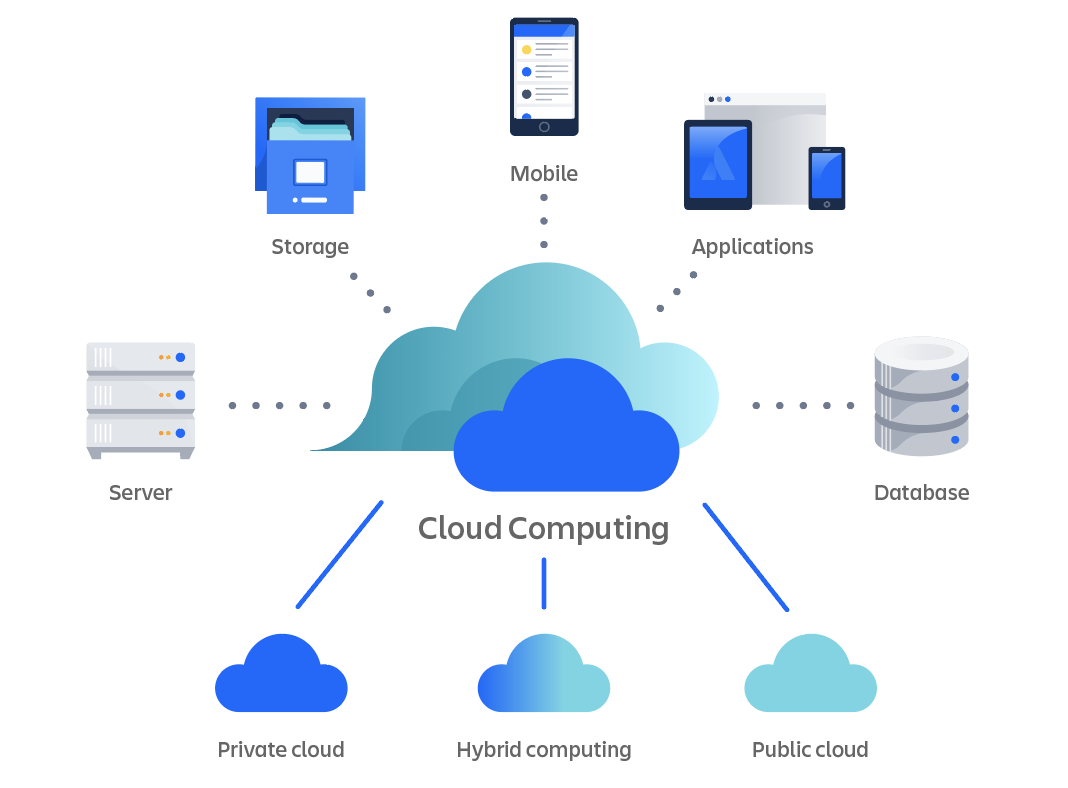LinkDaddy Cloud Services Revealed: Expert Techniques for Cloud Services Press Release Quality
LinkDaddy Cloud Services Revealed: Expert Techniques for Cloud Services Press Release Quality
Blog Article
Simplify Your Infrastructure With Cloud Solutions
As companies browse the ever-evolving landscape of modern technology and information administration, the role of cloud solutions in streamlining infrastructure has become significantly prominent. How can organizations efficiently browse this shift and truly unlock the capacity of cloud solutions for streamlining their facilities?
Benefits of Cloud Solutions
Cloud services supply a streamlined method to handling IT facilities, offering businesses with scalability, versatility, and cost-efficiency. One of the crucial advantages of cloud services is the scalability they use.
In addition, cloud solutions get rid of the requirement for businesses to buy pricey equipment and software program. This cost-efficiency is a considerable advantage, especially for small to medium-sized ventures wanting to minimize in advance prices. By utilizing cloud services, organizations can access top notch IT resources without the substantial cost tag connected with typical framework arrangements.
Moreover, cloud solutions give organizations with the versatility to access their information and applications from anywhere with a net link. This level of accessibility improves partnership among teams, allows remote job, and boosts total performance. The versatility provided by cloud solutions empowers organizations to adjust rapidly to transforming market conditions and customer demands.
Expense Cost Savings and Scalability
In enhancement to the functional advantages highlighted previously, the combination of cloud services right into a firm's infrastructure brings forth substantial price savings and improved scalability. Cloud services offer a pay-as-you-go version, permitting companies to scale resources up or down based upon present requirements, thus staying clear of the costs associated with keeping excess capability. This versatility enables firms to adapt quickly to fluctuating needs without sustaining unneeded costs.
Furthermore, cloud solutions remove the requirement for ahead of time financial investments in equipment and software, reducing funding expenditures. General expenses are also minimized as companies no much longer require to take care of and preserve physical web servers, resulting in reduced energy intake and IT staffing costs. Additionally, cloud solutions supply automatic updates and upkeep, making certain that the infrastructure continues to be current and safe and secure without needing manual treatments.
Enhanced Security Procedures
Implementing stringent safety procedures is critical when incorporating cloud solutions into a firm's facilities to safeguard sensitive data and guarantee compliance with industry policies. Cloud solution carriers provide enhanced safety and security attributes such as information encryption, firewall program defense, and multi-factor authentication to alleviate cybersecurity dangers.
In addition, routine safety audits and compliance evaluations aid ensure and determine susceptabilities adherence to industry requirements. Business can likewise gain from attributes like computerized security updates and real-time hazard monitoring supplied by cloud solution carriers. By focusing on safety steps and remaining positive in dealing with prospective threats, businesses can confidently leverage cloud services while protecting their useful information from unapproved accessibility or breaches.
Transitioning to Cloud Infrastructure
To efficiently integrate cloud solutions right into a company's infrastructure, a structured technique that addresses the shift in the direction of cloud-based remedies is essential. Transitioning to cloud framework involves mindful planning and execution to make sure a smooth movement procedure. The very first action is to evaluate the present framework and determine which systems and applications are appropriate for movement to the cloud. This assessment must take into consideration factors such as data level of sensitivity, conformity needs, and performance requirements.
Once the evaluation is total, a movement technique should be developed. This approach ought to describe the timeline, sources, and responsibilities for moving each element to the cloud. It is vital to communicate this plan plainly to all stakeholders to guarantee alignment and minimize disturbances throughout the change.
Throughout the migration testing, procedure and surveillance are critical to recognize and attend to any issues immediately. Normal checkpoints ought to be developed to track progress and make necessary modifications. Additionally, training for workers on making use of cloud solutions her response ought to be given to guarantee a successful transition and optimize the benefits of the brand-new facilities.
Ideal Practices for Cloud Fostering
Successful adoption of cloud solutions rests on the tactical alignment of service purposes with technological abilities and business readiness. To guarantee a smooth shift to the cloud, companies must begin by carrying out a comprehensive analysis of their present framework and identifying which work are best fit for cloud migration. It is important to involve essential stakeholders from various departments in this content the decision-making process to gain buy-in and deal with any type of concerns at an early stage.
An additional finest method for cloud adoption is to focus on safety and conformity. Organizations must carefully evaluate the protection measures used by cloud solution providers and make certain that their data is shielded according to industry requirements and regulatory needs. Carrying out robust data security, accessibility controls, and regular safety audits can assist minimize dangers connected with cloud fostering.

Conclusion

As services browse the ever-evolving landscape of innovation and data administration, the role of cloud solutions in simplifying facilities has come to be increasingly noticeable - universal cloud Service. Exactly how can organizations efficiently navigate this change and absolutely unlock the potential of cloud services for simplifying their framework?
Cloud solutions offer a streamlined strategy to handling IT framework, supplying businesses with cost-efficiency, adaptability, and scalability. By using cloud solutions, services can access top find more information quality IT sources without the large price tag connected with typical infrastructure configurations.
To make sure a smooth transition to the cloud, companies need to begin by conducting a comprehensive assessment of their current framework and determining which work are best fit for cloud migration.
Report this page